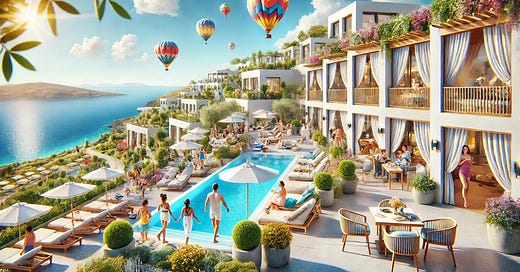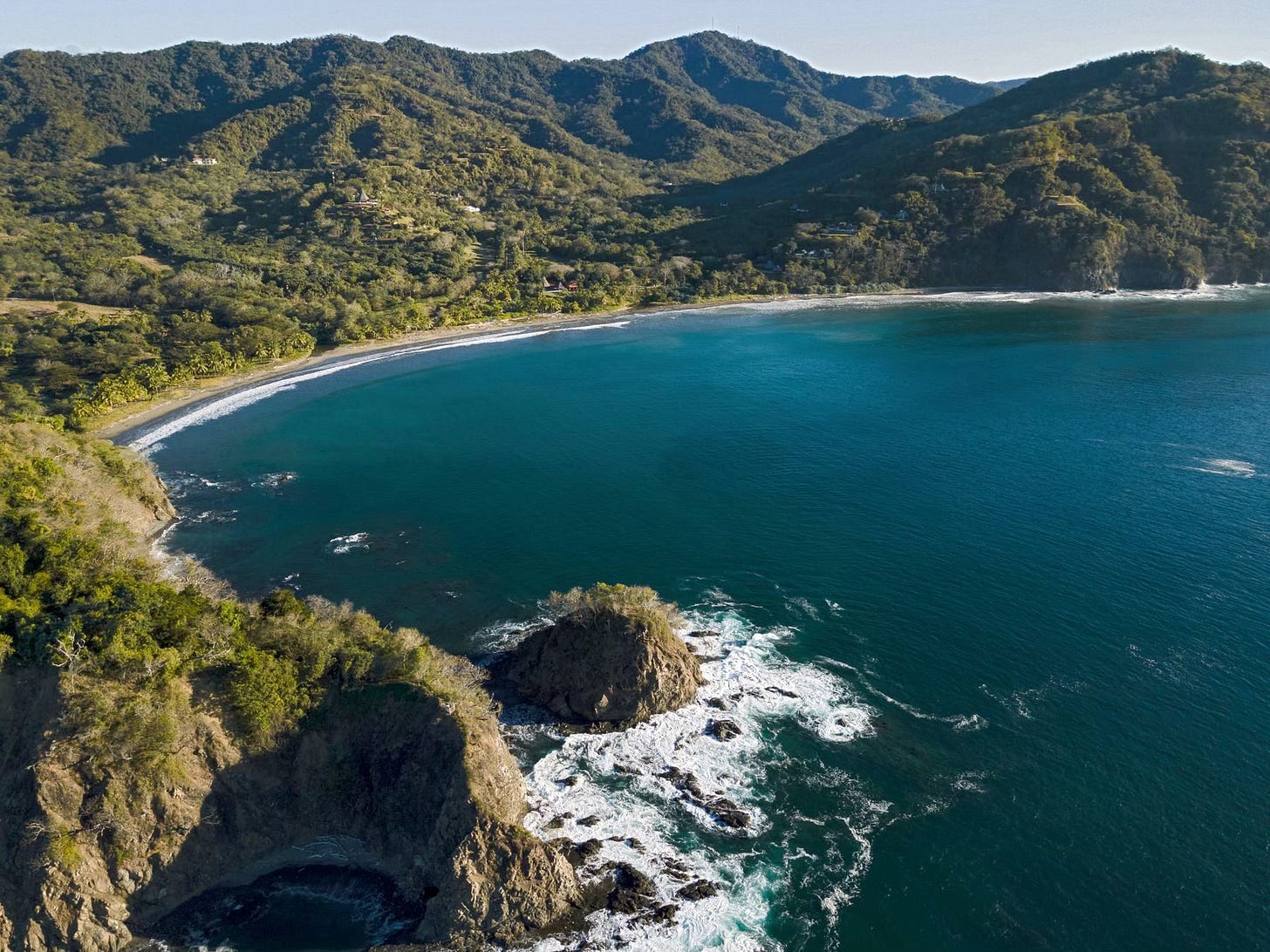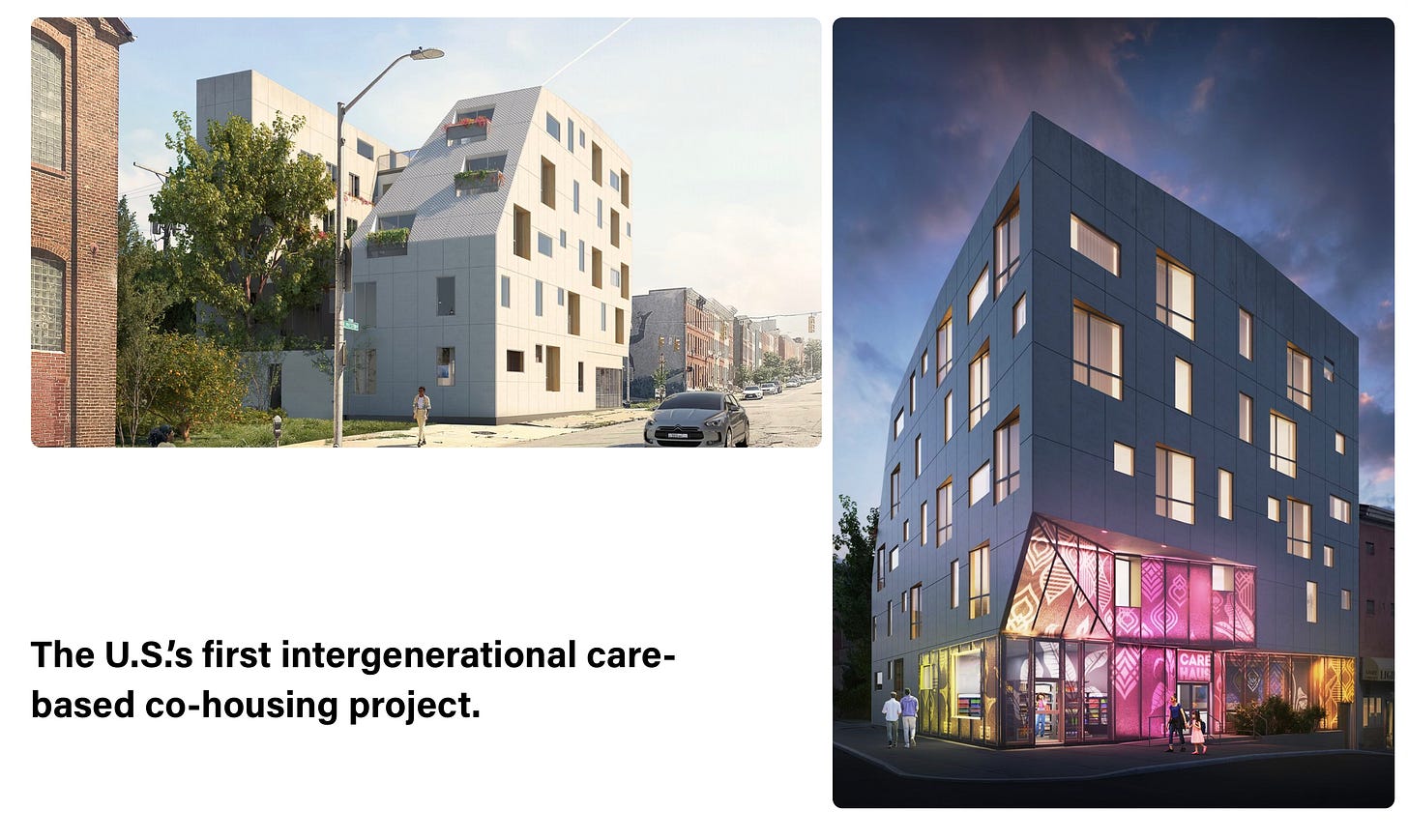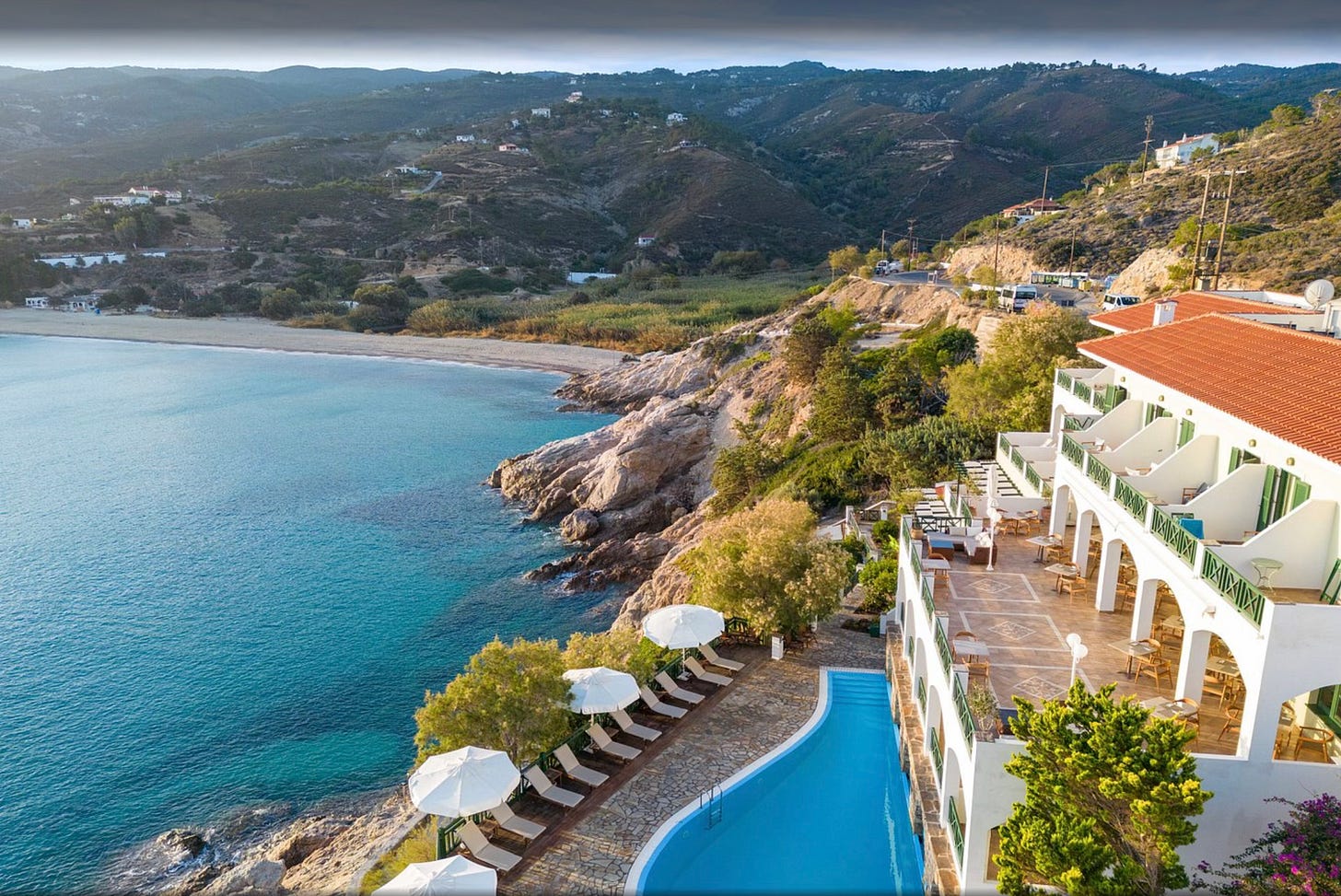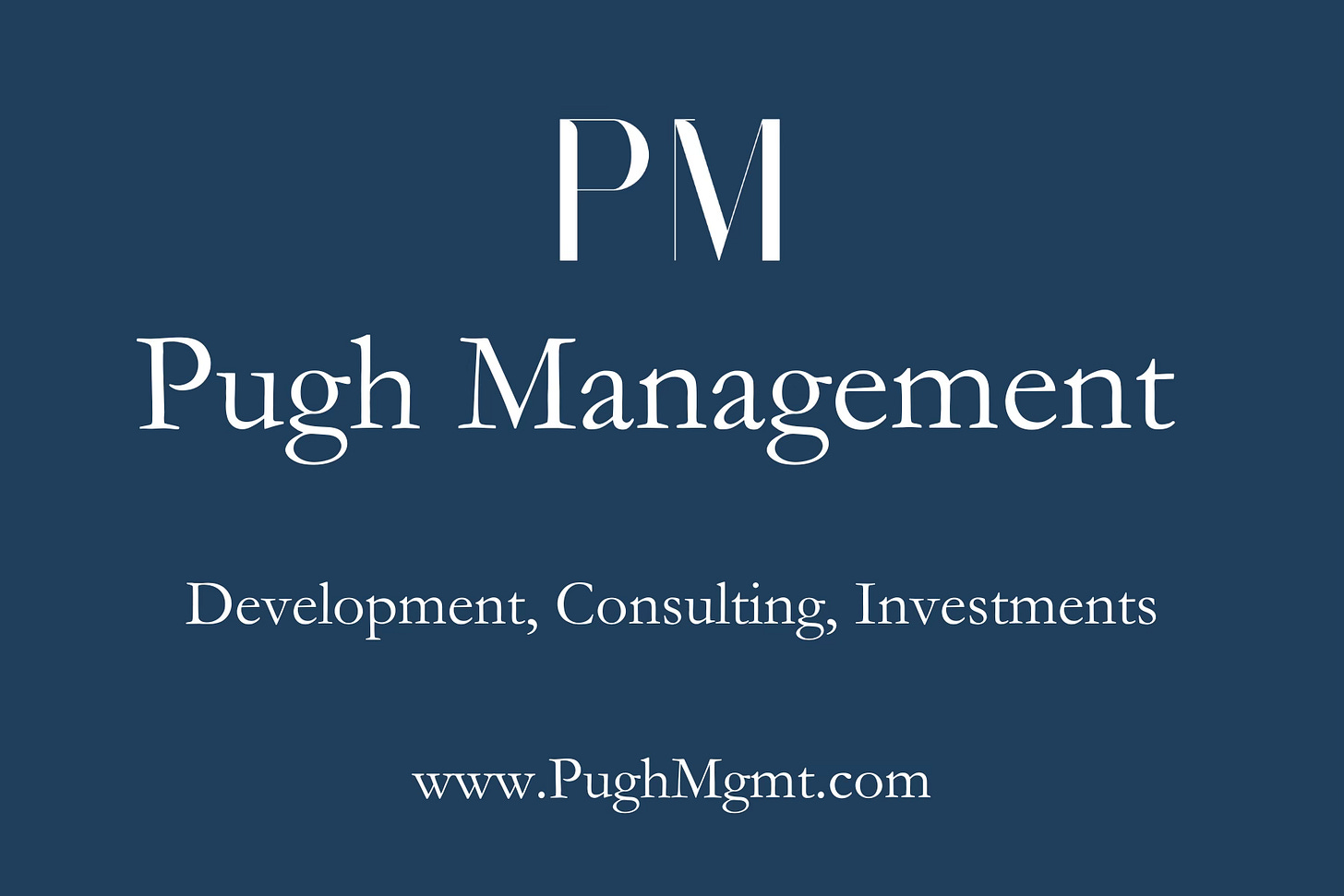Living Longer by Design: Blue Zones Inspire the Future of Wellness Real Estate
Discover How Blue Zone Principles Are Shaping Wellness-Focused Real Estate Developments for Healthier, Happier Living
Recent Popular Posts
Welcome to The LineUp! Our weekly newsletter seeks to add value by engaging, connecting, and inspiring real estate operators, investors, and entrepreneurs. If you enjoy what you read, please like, share, and subscribe. Thank you for your support in growing this community! If you’d like to participate in our conversation join us on the Substack Chat here.
I love Blue Zones…I’ve been lucky enough to visit a few over the years. My favorite Blue Zone is the Greek island of Ikaria. Ask me about it sometime. Though I have to warn you, you will have to stop me at some point as I’ve got a lot of things to say about it…And yes it is a nudist destination for German tourists.
The Global Wellness Institute estimates that the “Wellness Real Estate” sector could be worth $913 billion by the end of 2028. - The Financial Times
Blue Zones burst into popular culture via the Netflix show, Live to 100: Secrets of the Blue Zones.
Yes the term Blue Zones has become marketing fodder, kind of like the monikers, “ESG” and “LEED”. But I think this trend has legs because of how our society and culture is evolving due to the impacts of devices and screen time, these impacts have made us place a higher value on in-person experiences and personal well-being.
I also love spas and wellness retreats, so I figured why not.
So what is a Blue Zone?
People in blue zones have a high percentage of people who live to 100, and they are less likely to suffer from chronic illness. People in Blue Zones tend to have a lifestyle that includes:
Physical activity
Low stress
Rich social interaction
Local whole-foods diet

What are the key aspects of designing and building new communities based on the core principles of Blues Zones?
1. Generational Living and Community
Blue Zones emphasize coming together of multiple generations either under one roof or in one neighborhood. Fostering intergenerational support helps add to the quality of life for everyone. It also has been proven to add more years to the lives of older generations. As the elderly live more purposeful lives helping and guiding younger generations they live longer.
To create a nurturing environment for multiple generations the inclusion of larger housing units, multiple types of housing units in the same community, and programming to foster opportunities to meet older and younger generations. In a previous post on Multigenerational Housing, we discussed how some speciality and national developers are now creating housing with additional space, for older generations, built into their floorpans. Whether it be Lennar building a large intergenerational home or new developers like Ernst Valery in Baltimore looking for ways to connect and support older generations, developers are bringing a fresh take on what the definition of “housing” should be.
Another type of multigenerational housing is being created in California by developer Scott Choppin. His firm, Urban Pacific, focuses on the creation of urban, townhomes in working-class communities. Instead of creating new housing that is out of reach for a neighborhood, his designs allow multiple blue-collar, generations to live under one roof and to pool resources. This allows residents to stay in their neighborhoods, have newer and better housing options, and stay close to their friends and to strengthen their communities.
In another trend multigenerational, co-living is being integrated into elderly housing. This concept called Carehaus brings caretakers under the same roof with their patients. This concept creates a value-add for the caretaker and mitigates some of the costs for the elderly, who might not otherwise be able to age in place. Check this project in Baltimore out it is called Carehaus.
2. Wellness Trends
Today there are many growing wellness trends that can add value to people’s daily lives. These trends are integral to building new communities focused on Blue Zones principles. They include:
Plant-based Diets - People in Blue Zones eat predominantly plant-based diets. The inclusion of vegetables, nuts, beans, and whole grains in their diets helps Blue Zone residents prevent disease and live longer.
Natural Movement - Movement through low impact activities such as walking, gardening, and manual labor allow Blue Zone residents to keep strong and flexible. Everyday movement prevents not only disease through better digestion, but also prevents falls and injuries that typically plague the elderly.
Stress Reduction - Practicing meditation, prayer, and even afternoon naps helps keep Blue Zone residents mindful, grateful, and present in the everyday. Great sleep and a spiritual practice reduces stress and allows residents to enjoy a better quality of life.
3. Lifestyle Trends
The times might change but long trends shape our future communities. Some trends that have really evolved in terms of significance over the past 10 years include the integration of purposeful living, the concept of work-life balance, and sustainability.
Purposeful Living - The slower pace of life in Blue Zones mirrors the emerging desire for work-life balance and the concept of “Slow” or “Purposeful” living.
Now balance might not work for everyone, especially entrepreneurs. But real estate entrepreneurs should be aware of the demand for these types of experiential resorts and communities.
In Japan the concept of Purposeful Living is called “Ikigai” or living with “a reason for being”. There is no substitute for having a “why” in life. By slowing down and considering your purpose, you gain clarity on what matters most. This helps in everything from your career and relationships to personal development.
“Forest Bathing” walking or hiking through the forest on a daily basis can help to sooth the nerves and ground yourself.
Sustainability - Eco-friendly lifestyles include everything from the use of sustainable materials for buildings to minimizing the consumption of resources, like energy, food and water. Placing a focus on sustainable living is something many Gen-Z and Millennials seek to do as seek to be more on environmentally responsible.
Sustainability can be as simple as considering where you live and how long your commute is. Or it can be as complex as thinking about how the home you live in was constructed and where the materials were sourced from and your home’s energy consumption.
4. Lifestyle Design for Longevity
Turning to the design of Blue Zones communities. The concept of ‘lifestyle design’ can serve as a guidepost for developers when they think about how to create communities where longevity is a primary objective.
To achieve longevity for our residents, we must integrate walkability into our site plans. And we must include a plan for movement between places, our urban design, to foster more social connections. This holistic design approach is far from just designing a few homes or multifamily buildings that sit near parking lots. Thoughtful consideration of the spaces between buildings will lead to better outcomes. The inclusion of community design and programming for residents should go beyond parking and a fitness center.
Another important Blue Zone design principle includes access to nature. The ease in which residents can access nature has been proven to help them improve longevity. The design can easily do this through the inclusion of walking paths, nature trails, and the integration of biophilic design.
Biophilic design is a philosophy that aims to connect people with nature in both buildings and landscapes. It is based on the idea that humans need to connect with nature and other living beings. - Google Gemini
Lifestyle design is a topic that has caught on and it’s only going to expand as a force in the market.
5. Market Relevance
Blue Zones’ principles can serve as a blueprint for new businesses and real estate developers. Some key points include:
Multigenerational Housing - Developers are now seeking ways to encourage multigenerational living by blending privacy and shared spaces as well as creating units that share common spaces. This might be as simple as a shared courtyard between two homes or an in-law suite behind a new home.
Wellness Real Estate - Demand for wellness-centric communities continues to grow. These communities include such features as communal gardens, thoughtful fitness amenities, and mindfulness centers and spaces.
Lifestyle Products - New brands have begun catering to Blue Zone-inspired habits. These companies offer products like plant-based foods, ergonomic furniture, and sustainable living solutions. Not real estate related, but important to be aware of as a trend.
Resorts and communities located in or near Blue Zones include:
Costa Rica - Nicoya - Forblanca Resort
Italy - Barbagia Region of Sardinia - Forte Village
Greece - Ikaria - Erofili Beach Hotel
Japan - Okinawa - Hoshinoy
United States - Malibu - The Ranch
And if you want to live in a Blue Zone instead of just visit there are some new developments and there are existing towns and cities being “certified” as Blue Zones. Below are some wellness-focused communities that prioritize Blue Zone design and community principles:
United States - Florida - Ave Maria Florida
Portugal - Alentejo - Casa Na Areia
To learn more about Blue Zones you can go to their website here.
I look forward to following this movement as it grows and continues to evolve as Blue Zones or under a new name. Either way communities focused on well-being and great experiences in nature are here to stay.
Cheers,
John
Thank you for reading The Lineup. Do you have a topic on real estate development, entrepreneurship, urbanism or placemaking topic you'd like to see us cover in an upcoming post? We'd love to hear from you! We are also open to media partnerships and cross-posts. Reach out to us at contactus@pugh.investments. And don't forget to like, share, and subscribe!
Additional Reading on Blue Zones
Financial Times - Feeling fine: the rise of ‘wellness real estate’
Unique Estates Blog - Why Are Blue Zones The Hottest Destinations Right Now?
Tastefully Minimalist - The subtle art of downshifting life with 5 surprising benefits
The Government of Japan - Ikigai the Japanese Secret to a Joyful Life
This post is sponsored by Pugh Management, a leader in commercial and multifamily real estate development. To learn more reach out to us at info@pughmgmt.com or click this link to our website.


